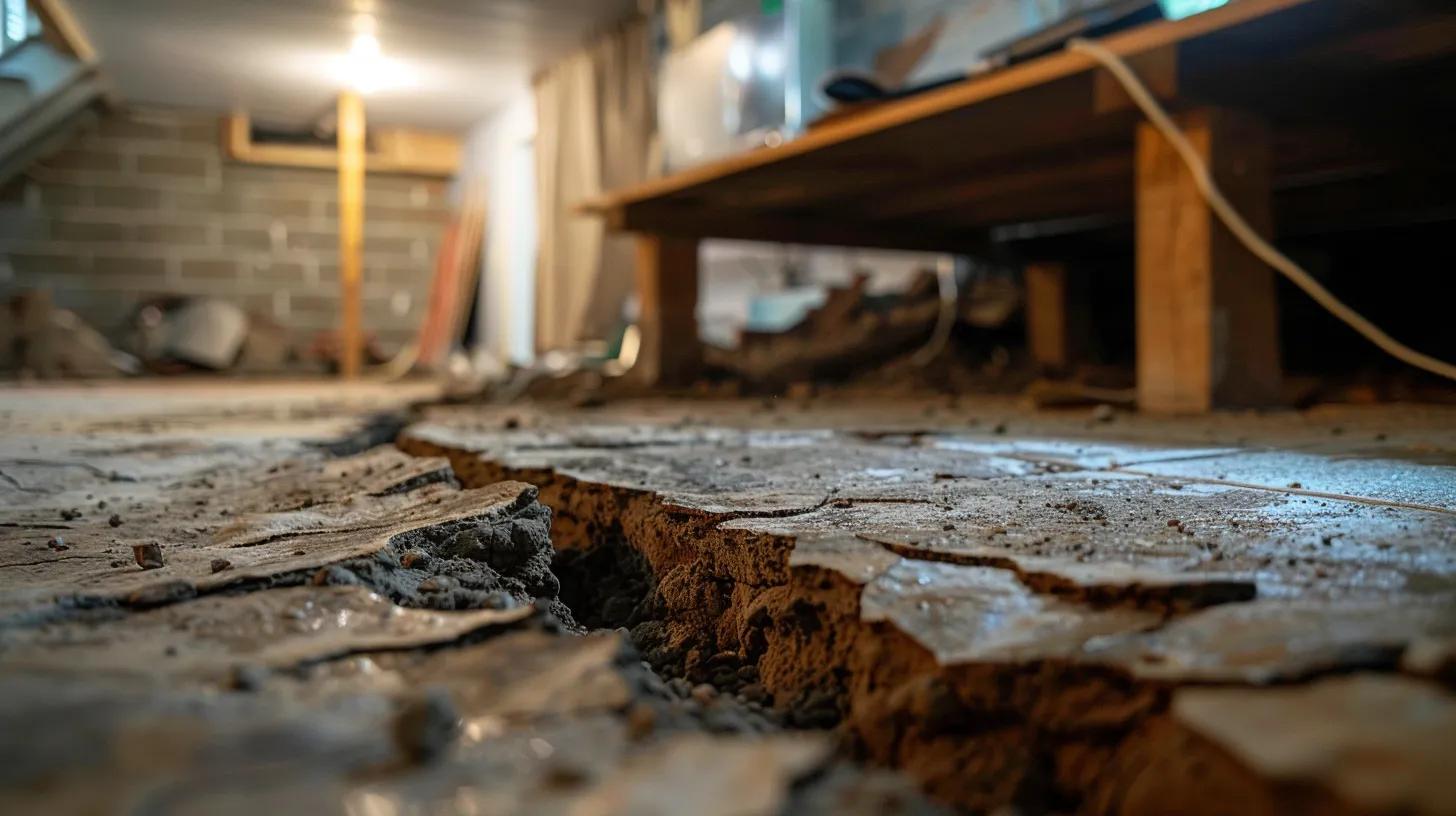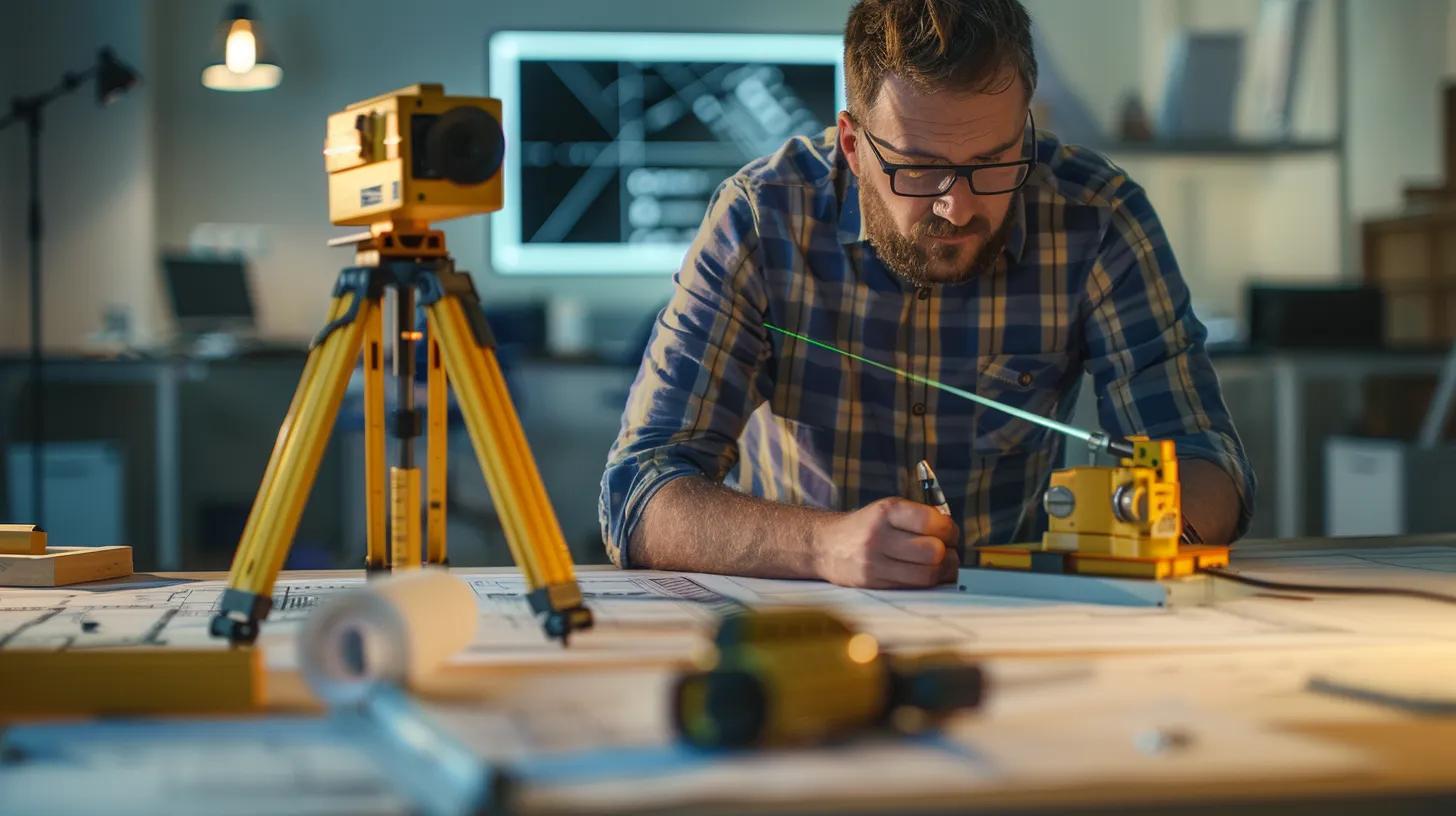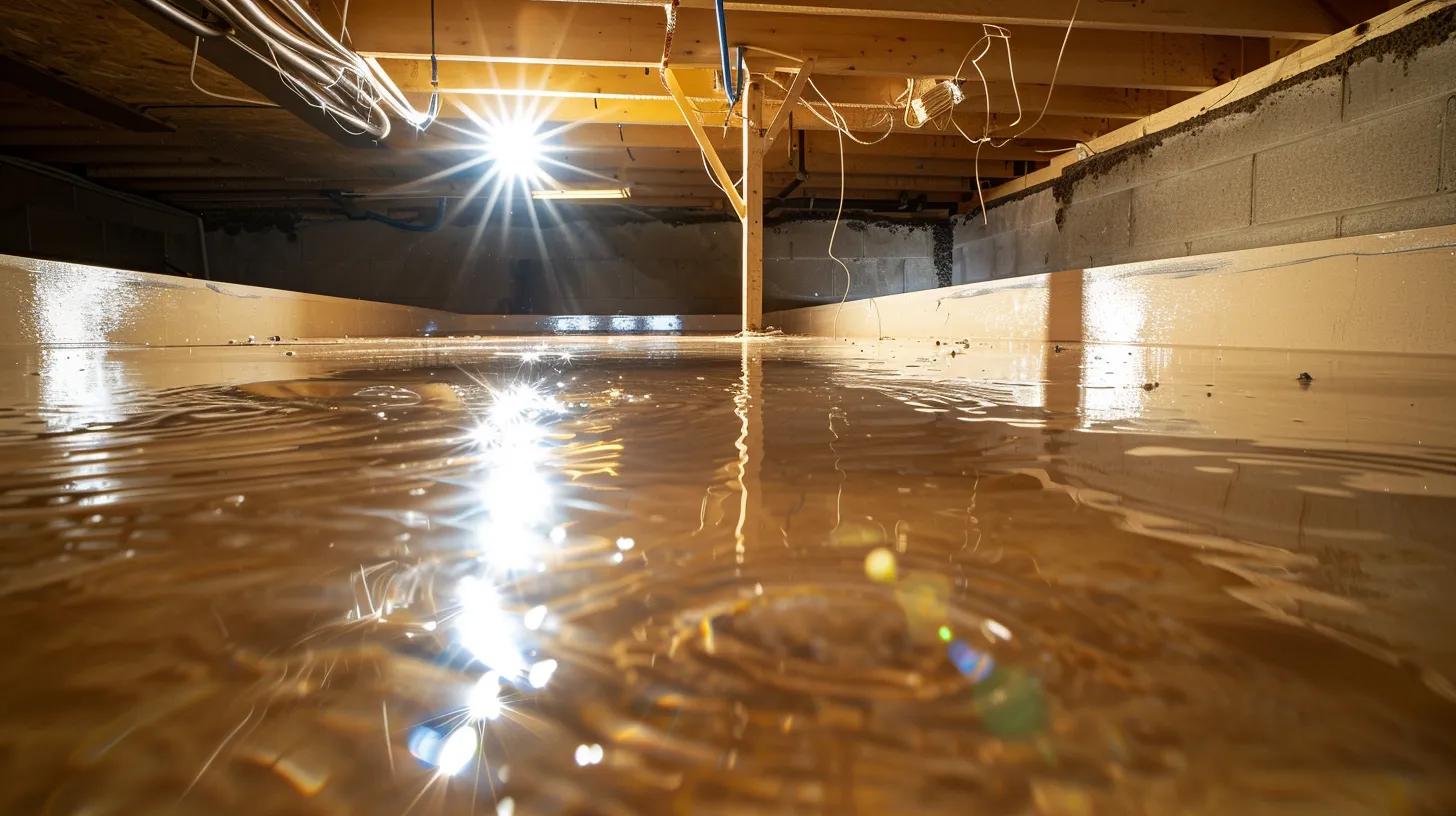Understanding the Different Types of Foundation Repairs
Foundation repairs are critical to preserving the structural integrity of any building, whether residential or commercial. At Oran Foundation Repair Richmond VA, we understand that no two foundation issues are the same – each problem requires a tailored approach. In this article, we outline various foundation repair techniques, from pier and beam repairs and slab foundation adjustments to waterproofing and crawl space encapsulation. Our aim is to educate homeowners in Boston, MA and surrounding areas on the warning signs, benefits, and limitations of each method so you can make informed decisions when selecting a foundation repair contractor.
It is essential to start with a comprehensive evaluation of your property’s stability. Homeowners may notice signs like cracks, bowing walls, or uneven floors; these indicate that professional evaluation and repair are needed. By checking for water infiltration, soil erosion, or expansive clay movement, we recommend specific techniques that restore structural integrity and prevent future damage. As a foundation repair expert in mold remediation, basement waterproofing, and reinforced concrete solutions, we are able to craft a customized repair plan that meets your structure’s unique needs.
Foundation repair innovations have evolved, allowing both traditional and modern methods to address a wide range of issues. This article guides you through common repair techniques, their advantages and limitations, and what you can expect during and after the repair process. Let’s explore these techniques to demystify foundation repair and guide you toward a long-lasting solution.
What Are the Most Common Types of Foundation Repair Techniques?
Our foundation repair solutions range from simple crack patching to advanced systems combining waterproofing and crawl space encapsulation. The most common techniques include:
• Pier and beam foundation repairs • Slab foundation adjustments • Foundation crack repair methods • Comprehensive waterproofing • Crawl space encapsulation procedures
Each method is designed to tackle specific issues depending on the type of foundation and damage.
How Does Pier and Beam Foundation Repair Work?
Pier and beam repair involves installing vertical supports (piers) beneath structural beams to stabilize a raised building. When a building experiences settling, our team drives steel or concrete piers deep into stable soil or bedrock. These transfer the load from the compromised foundation to firm ground, preventing further movement. The process begins with a site survey using laser leveling to identify weak areas. Once installed, beams are reattached or replaced with corrosion-resistant fasteners. This method is especially effective for older homes and helps prevent future differential settlement.
What Is Slab Foundation Repair and When Is It Needed?
Slab foundation repair is required when a concrete slab begins to crack, shift, or sink due to soil movement, moisture penetration, or poor construction. Technicians assess damage via non-invasive probing and concrete scanning. Once identified, methods such as slab jacking are used—where polyurethane foam or grout is pumped under the slab to lift and level it. This procedure corrects uneven floors, bridges gaps, and adds waterproofing protection against future moisture damage. It is typically recommended when cracks, uneven floors, or water infiltration are observed.
How Are Foundation Cracks Repaired Effectively?
Foundation crack repair prevents further structural damage. The process starts with an inspection of the crack’s width, depth, and appearance. For minor cracks, epoxy injections bond the concrete and seal against moisture; for larger or actively moving cracks, mechanical stabilization combined with flexible polyurethane foam is used. These techniques slow deterioration while reducing the risk of water infiltration. Our repair solutions offer immediate stability and long-term foundation protection.
What Does Foundation Waterproofing Involve?
Foundation waterproofing creates a barrier on both the exterior and interior to stop water from seeping into foundation walls and basements. The process usually involves cleaning the surfaces, applying special waterproofing membranes, and sealing joints with high-performance adhesives. Externally, it may require excavation, application of a damp-proof coating, and installation of drainage systems (like a french drain) to redirect water. Internally, cracks are sealed and sump pump systems may be integrated. Effective waterproofing not only guards against water damage but also helps prevent mold growth and maintains indoor air quality.
How Does Crawl Space Encapsulation Improve Foundation Health?
Crawl space encapsulation seals the area beneath a building from external moisture and contaminants. This involves laying a heavy-duty polyethylene barrier over the floor and walls of the crawl space and installing proper ventilation, insulation, and vapor barriers. Encapsulation prevents mold, wood rot, and pest infestations while also improving energy efficiency by reducing air leakage. This method protects both the foundation and the overall structure of the building.
How Do You Identify Which Foundation Repair Technique Is Right for Your Home?

Choosing the correct foundation repair technique starts with careful observation and diagnostic testing. Homeowners should look for visible signs such as cracks, water accumulation, or shifts in wall or floor alignment. Each method addresses particular conditions, and understanding these indicators helps in choosing the most effective repair approach.
What Signs Indicate Pier and Beam Foundation Issues?
Pier and beam issues often show through sagging floors, uneven doorways, and gaps between walls and floors. Additional indicators include damp spots in crawl spaces and misaligned windows or doors. Our evaluations use laser leveling and moisture content analysis to confirm whether the foundation has shifted and to determine if pier and beam repair is necessary.
How to Detect Problems in Slab Foundations?
Slab foundation problems are typically detected through visual inspections and tools like infrared thermography. Homeowners might observe wide cracks, bumpy or uneven floors, or sunken areas. Other signs include water pooling around the slab or cracks in adjacent structures. Early detection is crucial to allow timely intervention through methods such as slab jacking or, in severe cases, slab replacement.
When Should You Consider Foundation Crack Repair?
Foundation crack repair should be considered when small cracks begin widening or when multiple cracks appear in load-bearing areas. Even minor cracks can expand due to frost heave, soil compaction, or moisture infiltration. Early intervention using epoxy or polyurethane foam sealing helps prevent further deterioration and controls repair costs. We recommend a professional inspection if cracks worsen or reappear after initial repairs.
How Does Moisture Affect Foundation Repair Choices?
Moisture is a primary cause of many foundation issues. High moisture levels lead to expansive clay movement and subsequent foundation shifts, as well as promote mold growth and corrosion of reinforcements. Our foundation repair Richmond VA team conducts moisture testing to determine water levels within the soil and structure, which guides us in recommending options like comprehensive waterproofing or crawl space encapsulation to mitigate future damage.
What Are the Benefits and Limitations of Each Foundation Repair Method?
Every foundation repair method has advantages and drawbacks that affect cost, durability, installation time, and future maintenance needs. We evaluate these factors to help you choose the best solution for your specific foundation issues.
What Are the Advantages of Pier and Beam Repairs?
Pier and beam repairs can lift a settled building back to its original level, providing immediate stabilization. They are especially beneficial for older structures where conventional repairs may not be as effective. By transferring loads to more stable soil layers, this method reduces further settling. However, it can be complex and may involve higher costs due to precise engineering requirements.
What Are the Pros and Cons of Slab Foundation Repair?
Slab foundation repair, such as slab jacking, offers quick restoration of level floors and closes cracks with minimal interior disruption. It is generally cost-effective on a per-square-foot basis, though it may be less effective if underlying soil conditions remain poor. Recurring moisture issues may require additional waterproofing, affecting the durability of the repair over time.
How Effective Is Foundation Crack Repair Long-Term?
When executed correctly, foundation crack repair effectively restores structural integrity and prevents water infiltration. Epoxy injections or polyurethane foam sealants offer durable fixes. However, long-term success depends on controlling external moisture and soil movement. Scheduled inspections can help maintain repair longevity.
Why Is Foundation Waterproofing Essential for Longevity?
Waterproofing the foundation extends its lifespan by protecting it from water damage, mold growth, and corrosion of steel reinforcements. It improves indoor air quality and reduces maintenance costs. The main limitation is that waterproofing layers must be maintained and inspected regularly to remain effective over time.
How Does Crawl Space Encapsulation Enhance Structural Integrity?
Encapsulation not only prevents moisture from damaging the foundation but also creates a controlled environment that reduces energy loss and inhibits mold growth. While its initial cost is higher, the long-term benefits of reduced repair needs and increased energy efficiency often justify the investment.
How Is a Professional Foundation Inspection Conducted Before Repair?

A professional foundation inspection is the critical first step in diagnosing foundation damage. At Oran Foundation Repair Richmond VA, our certified structural engineers combine visual assessments, laser leveling, and moisture testing to pinpoint issues. This comprehensive inspection ensures that the most suitable repair method is chosen and that no underlying problems are missed.
What Does a Certified Structural Engineer Look for During Inspection?
Engineers examine the overall alignment and levelness of your structure, noting signs such as cracks, wall bulges, and misaligned doorframes. They inspect critical support elements like beams and piers and measure moisture levels using tools like laser levels and moisture meters. Identifying stress points and water infiltration areas allows us to recommend targeted repairs.
How Are Foundation Cracks and Damage Assessed?
Cracks and damage are evaluated using both visual inspections and non-destructive tests such as infrared thermography and ultrasonic pulse velocity. By measuring the width, depth, and extent of cracks, we determine whether they are stable or worsening, which is essential for a successful repair strategy.
What Role Does Moisture Testing Play in Foundation Evaluation?
Moisture testing is pivotal in foundation evaluation. Elevated moisture levels can lead to expansive clay movement, mold development, and corrosion of reinforcement materials. Using moisture meters and hygrometers, we determine if additional measures—like enhanced waterproofing or drainage solutions—are necessary to prevent further damage.
How Are Customized Repair Plans Developed?
After inspection and testing, our team develops a repair plan tailored to your foundation’s unique issues. This plan outlines the scope of work, selected repair techniques, and an estimated timeline. We consider the type of foundation, severity of damage, soil conditions, and environmental factors to ensure long-term durability and avoid future repair issues.
What Should Homeowners Expect During and After Foundation Repair?
Homeowners can expect a step-by-step, professional process throughout foundation repairs. From the initial inspection to final evaluations, our team at Oran Foundation Repair Richmond VA ensures every repair meets high standards and is clearly communicated to minimize disruption.
How Long Do Different Foundation Repairs Typically Take?
Repair durations vary with the type and extent of damage. For instance, pier and beam repairs may range from a few days to several weeks, depending on complexity. Slab repairs, such as slab jacking, typically take one to two days—plus additional time for curing and inspections. Waterproofing and encapsulation projects may extend over a week if extensive work is required.
What Are the Common Steps in Pier and Beam Repair?
Pier and beam repair involves initial site preparation and assessment, installation of new piers, reinforcement or replacement of beams, and leveling the structure. Finally, all gaps are sealed to prevent moisture infiltration. This systematic process ensures both stability and improved safety.
How Is Slab Foundation Repair Executed Safely?
Slab foundation repair is executed using methods like slab jacking or polyurethane injection. Technicians evaluate damage, then pump repair material beneath the slab to lift and level it while sealing cracks against moisture. Strict safety measures, such as secure shoring and monitoring material flow, are followed to protect both the structure and workers.
What Maintenance Is Needed After Foundation Waterproofing and Encapsulation?
After waterproofing or encapsulation, regular maintenance is essential. Homeowners should inspect for any signs of moisture ingress and confirm that barriers remain intact. Annual inspections, proper drainage maintenance, and addressing landscaping issues can help preserve the benefits of the repair.
What Warranty and Support Options Are Available?
At Oran Foundation Repair Richmond VA, we offer comprehensive warranties covering our repair work for a defined period. Follow-up inspections are provided to ensure the repair performs as expected, giving homeowners peace of mind and long-term support.
How Can Foundation Waterproofing and Crawl Space Encapsulation Prevent Future Repairs?

Preventative measures such as waterproofing and crawl space encapsulation are key to avoiding future repairs. By blocking water infiltration—a major cause of foundation damage—these methods protect against mold growth, soil erosion, and structural degradation.
What Are the Signs That Waterproofing Is Needed?
Signs include persistent dampness in basements or crawl spaces, visible mold or mildew, and efflorescence on foundation walls. Musty odors or condensation on pipes also suggest that water is penetrating the structure, indicating the need for immediate waterproofing.
How Does Crawl Space Encapsulation Control Moisture and Mold?
Encapsulation creates a physical barrier that prevents ground moisture from entering the crawl space. By reducing humidity and installing dehumidifiers and vapor barriers, encapsulation controls mold growth and maintains a stable indoor environment, reducing the risk of future repairs.
What Materials and Techniques Are Used in Waterproofing?
Modern waterproofing uses high-performance membranes, liquid-applied coatings, and drainage systems like french drains. Crystalline waterproofing solutions that integrate with concrete at a molecular level are also common. These materials, applied by trained professionals, provide long-lasting protection against water infiltration.
How Do These Methods Extend Foundation Lifespan?
By preventing water seepage, waterproofing and encapsulation mitigate issues like freeze-thaw cycles, expansive clay movement, and corrosion. Maintaining a dry foundation preserves its structural integrity, ultimately enhancing property value and safety while reducing long-term repair costs.
What Are the Costs and Financing Options for Different Foundation Repairs?
Foundation repair costs vary with the method, extent of damage, and property conditions. At Oran Foundation Repair Richmond VA, we offer transparent pricing and flexible financing to ensure necessary repairs are accessible without undue financial strain.
How Do Repair Costs Vary by Technique?
For example, pier and beam repairs may require higher upfront costs due to specialized materials and extensive work, while slab jacking often costs less per square foot but might need reapplication if underlying issues persist. Waterproofing and encapsulation include costs for both materials and labor, plus potential drainage improvements.
What Factors Influence Foundation Repair Pricing?
Repair pricing is influenced by the affected area’s size, damage severity, local soil conditions, moisture levels, and the presence of expansive clay. Specific methods, such as resin injections or steel pier installations, have unique cost structures. Our evaluations consider all these variables to provide cost-effective, tailored solutions.
Are There Financing or Warranty Options for Homeowners?
Many foundation repair companies offer financing options like low-interest loans or deferred payment plans. We also provide warranties—often ranging from five to ten years—covering workmanship and materials to ensure lasting repair performance and peace of mind.
How to Choose a Reliable Foundation Repair Specialist?
When choosing a specialist, consider experience, proven track records, and professional certifications. Look for customer testimonials, transparent pricing, and comprehensive warranties. At Oran Foundation Repair Richmond VA, our industry experience and commitment to quality set us apart.
What Are the Common Steps in Estimating Repair Costs?
Cost estimation begins with a thorough on-site inspection, precise damage measurements, and environmental assessments. Based on these findings, we develop a detailed proposal covering both material and labor costs, ensuring homeowners understand what is required and why.
Frequently Asked Questions
Q: What are the early warning signs of foundation problems? A: Noticeable cracks in walls or floors, uneven door and window frames, and dampness or water pooling in basements or crawl spaces signal potential issues. A professional inspection is advisable if these symptoms are observed.
Q: How do I know if my foundation needs waterproofing? A: Visible water seepage, damp spots, mold growth, and musty odors in basements or crawl spaces indicate the need for waterproofing. Professional moisture testing can confirm if water infiltration is a concern.
Q: What makes pier and beam repairs effective for older homes? A: These repairs stabilize structures by transferring weight to deeper, more stable soil layers. The method realigns sagging floors and corrects imbalances, extending the foundation’s lifespan.
Q: Are there financing options available for foundation repairs? A: Yes, many companies offer financing solutions such as low-interest loans or deferred payment plans to help manage repair costs without compromising quality.
Q: How often should I schedule a foundation inspection? A: A professional inspection is recommended every three to five years, or sooner if signs of structural stress appear. Early detection helps prevent more extensive repairs.
Q: What is the typical warranty period for foundation repairs? A: Warranty periods vary by method and contractor, but many specialists offer warranties ranging from five to ten years, covering workmanship and materials.
Q: Can multiple foundation repair methods be combined for better results?
A: Yes, integrating methods like waterproofing with crawl space encapsulation can enhance effectiveness by addressing both structural issues and moisture problems.
